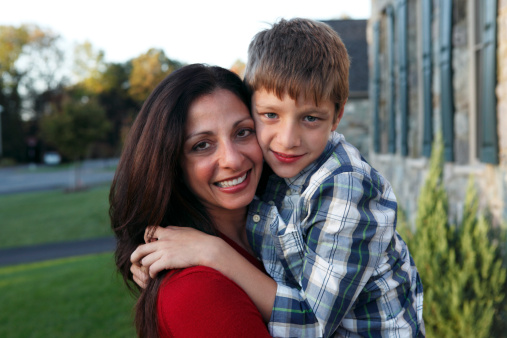
It is true that a child’s symptoms of autism can be very different, still though, the parents almost always know if something seems unusual with their child. Autism shares similar symptoms with other medical problems, and that’s why it’s imperative that a professional assessment is performed to determine autism. keep reading to learn a little bit about autism symptoms – the more common ones, and even still these symptoms can be manifest differently in children.
For a normal infant, there is a natural need and tendency to want tactile attention from others; to be held and touched. it has long been one of the recognized symptoms of autism that the child will not want to be touched by their parents or anyone else. As you can imagine, the levels of stress can be very high in the parents when they realize their child reacts negatively to any kind of touch. There can be a variety of symptoms in the autistic child, it’s just that the symptom involving touch is seen in very many of these children. Even though efforts are underway to help children accept touch, it’s just not known if it will work in the long-run. Related, perhaps, to the touch aversion is the idea of personal physical space, and the autistic can become highly agitated if anyone crosses the boundaries.
Autistic children often have the symptom of not playing the kind of games other children enjoy. Ask any parent and they’ll tell you kids love playing roles, usually gender specific, and that kids will have imaginary friends and make-believe, magical places, etc. If you didn’t understand what was going on with the other children, or why they were doing something; then you would probably tend to avoid doing it. That’s the autistic child.
They also have difficulty communicating with and interacting with others, especially in groups. when autistic children do play, it’s more of something highly specific to only the child that they engage in. Typical kinds of behaviors seen are particular movements, or patterns of moving; or there can be playing with a special object or staring/looking at an object. so that is the common explanation when you don’t see autistic children participating in the same types of activities as non-autistic children.
Other common autistic behaviors include unusual rituals, very strong attachment to objects, and highly repetitive movements. that is why you can see autistic children doing nothing but looking, or staring, at any particular object – pick anything, and they do that for a long time. or they may develop their own personal rituals, such as walking around in a circle or moving their hands around in a certain way. the very real problem with these behaviors is there can be times when a child, or adult, can inflict injury on him or herself. for this reason, some people with autism are given medication to control their behavior or restrained to prevent them from harming themselves or others. This, however, only applies to people with severe symptoms of autism.
There are more symptoms that are considered common in autism, and that are seen frequently in the very young child. since all autistic people are different, treatment plans have to be individualized based on the symptoms and severity of each case. Only time and more research will eventually allow researchers to understand what causes autism, and hopefully if any cure can be found.